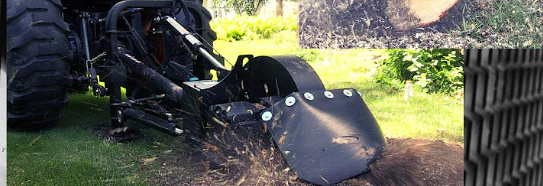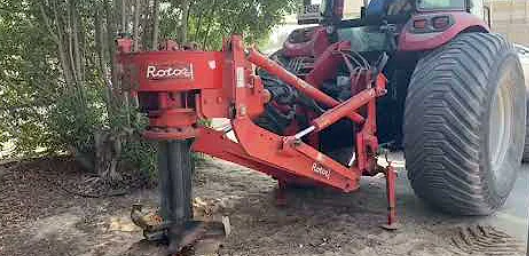Contents
3 point hitch stump grinder: The Woodland Mills WG24 Stump Grinder is a robust option with features tailored for efficient stump removal.
Features:
- Direct connection to your tractor’s 3-point hitch system.
- Driven by the PTO shaft for reliable power.
- Large 24″ solid steel grinding flywheel with 34 tungsten carbide cutting teeth.
- Grinds up to 6″ below ground level, preparing the ground for further landscaping.
- Quick attach compatible for easy hookup.
- Works best on tractors with independent PTO shafts.
- Operating at 540 RPM is required for optimal performance.
Erskine 3-Point PTO Stump Grinder
The Erskine 3-Point PTO Stump Grinder offers efficient grinding performance while being gentle on your tractor.
Features:
- Heavy-duty stabilizer base for stability during operation.
- PTO-driven cutting system delivers 810 RPM to the rotor.
- Hydraulic cylinders ensure precise horizontal and vertical positioning.
MechMaxx 3-Point PTO Stump Grinder (Model SG24)
The MechMaxx SG24 Stump Grinder is designed for versatility and reliability in stump removal tasks.
Features:
- Direct connection to your tractor’s 3-point hitch system.
- Large 24″ solid steel grinding flywheel with 34 tungsten carbide cutting teeth.
- Suitable for tractors with PTO power ranging from 15-45HP.
- Includes a slip clutch style PTO shaft for added safety.
Baumalight 3-Point Hitch Stump Grinder (3P24)
The Baumalight 3P24 Stump Grinder is a powerful option suitable for a wide range of tractors.
Features:
- Designed for tractors equipped with a 30–50 horsepower motor.
- 24″ rotor with 34 replaceable carbide teeth for efficient grinding.
- Cutting and lifting cylinders powered by your tractor’s hydraulic remotes.,
Choose the stump grinder that best fits your requiremets, and bid farewell to those stubborn stumps for good! 🌳💪

